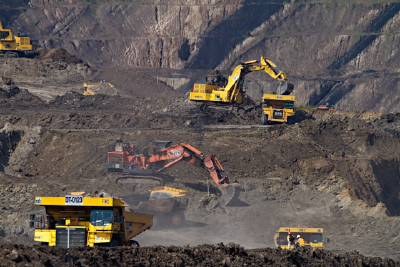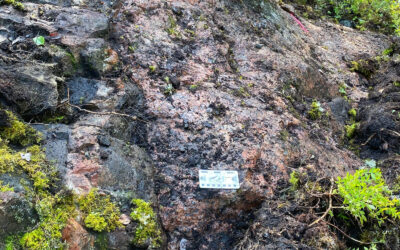Vancouver, BC – October 16, 2024 – ACME Lithium Inc. (CSE: ACME) (OTCQB: ACLHF) (the “Company”, or “ACME”) is pleased to announce that the 2024 field exploration season conducted by Snow Lake Resources ltd., dba Snow Lake Energy (Nasdaq: LITM) (“Snow Lake”) on the...
The Language of Opportunity: Key Terms for Investing in Junior Mining Companies

It’s a little known, and often misunderstood segment of the mining value chain.
But one that can offer returns literally upwards of 5, 10, or even 20 times your investment.
I’m talking about junior mining companies.
Here are five things you need to know about “juniors”…
They’re Not Actually Mining Companies
Confused? Don’t be. There’s an important distinction you need to understand.
The mining industry is split into two separate areas: 1) prospecting and exploration, 2) mine development, extraction, and reclamation. When most people think of the mining industry, they think of the second part. The scene with the enormous pits filled with heavy digging equipment and trucks removing ore for processing.
That’s not what juniors do. As you might assume, the actual process of mining is a hugely capital-intensive (and experience-intensive) undertaking. Way beyond the resources of a typical junior company. In fact, according to a report by Minex Consulting, trying to take a mine to production is actually the riskiest activity that a junior miner can undertake.
Instead junior miners live almost exclusively in the initial stage of prospecting and exploration. And that’s no easy task in itself. First they have to conduct geological testing to determine whether any valuable ore exists on the property.
Once they’ve determined the presence of a buried ore deposit, it’s time to start mapping. This is when, based on the information they’ve already collected, they start drilling and sampling to determine the size, shape and location of the deposit in question.
Once that’s done, they can start filing the appropriate reports on the property’s mineral content.
But then what happens??
Where do they eventually earn their money?
They’re in the Buy-Out Business
A junior miner’s goal is to uncover and define a deposit so irresistible, a major/senior miner will swoop in and buy the property for a premium. That’s where their paydays generally come from.
This might sound a little simplistic, but the reality of the industry makes them and their efforts essential to the overall process. According to a report by AT Mineral Processing:
Although companies in the mining industry consider the exploration of new deposits to be extremely important for their continued existence, senior miners have recently allocated only a relatively small portion of their revenues to exploration spending. The main expenditures were invested in the development of existing mines and measures for the reduction of operating costs.
So looking closely at the results of junior miners is in their best interests.
Of course the ability to sell a property with a proven reserve isn’t that simple. Any transaction depends on a lot of factors, namely the economic feasibility of the project. And that generally isn’t considered until the actual mining costs — not to mention the price of and the demand for the underlying commodity — are factored in.
So even a potentially great discovery may struggle to generate any interest.
These points lead to one of the major risks you need to understand about the junior industry…
They’re Money Sponges
If I could think of a more diplomatic way to put it, I would. But unfortunately this is a fact of junior mining life. Metals analyst Richard Mills sums it up…
Indeed juniors have one of the toughest jobs in the industry. Finding and advancing new projects is difficult and capital-intensive. The kicker is the juniors have no revenue stream to finance their exploration activities; they typically rely on outside sources for funding.
No regular revenue stream is an unfortunate fact of life in this end of the business. The other unfortunate fact of life is that it costs money to test, drill and sample.
This is why it’s important to understand a junior miner’s cash management strategies: how they’re managing their capital, what they’re spending on, how long they can drill and sample before needing to raise more money.
Expenditures on exploration typically always follow a commodity’s price. Still, a smart, experienced management team is critical for long-term survivability in the business..
It’s all too easy to burn through a mountain of capital only to find itself halfway through a drilling project with no money left to drill. That end can result in another unique feature of some junior miners…
They Own Portfolios of (Already Drilled) Properties
When a mining company runs out of cash for one project, they have to make some decisions. One choice is often to abandon one project in favor of another.
Junior miners, smart ones at least, generally hold a portfolio of projects that they can work on. If, for example, a copper project isn’t panning out and money is getting low, they may look to sell the property to another junior miner, take the proceeds and shift their attention to another project.
Yet another fact of life in the junior mining business.
Now you might wonder, why would one junior miner buy a property with 20, 40 or more holes already drilled on it? Doesn’t that suggest that they’re wasting their money on a nonproductive parcel of land?
That can actually be an asset for a purchaser if they have a good sense of the minerals contained in the property. Think of it as a bunch of money they don’t need to spend drilling.
So the fact that a company may have bought a project that already appears to be drilled may actually be an asset for the buyer.
Bottom line…
They’re Risky but Potentially Hugely Rewarding
Make no mistake, junior miners are a risky proposition when it comes to investing. It can take years to fully document the resources on a particular property. And in that time, all kinds of factors (like prices) can change.
But they’re also an absolutely critical part of the mining value chain.
And if you can understand a company’s mineral holdings, their drilling progress, their financial position (cash management) along with the price trend of the underlying mineral, investing in junior miners can lead to huge rewards.
You May Also Like
Lithium 2.0
Is lithium dead? The once darling of the battery metals has experienced a huge collapse from its spectacular rally in late 2021 through 2022. During that brief period, the price of the white metal soared from just under $15,000 per metric ton to over $80,000. The...
Understanding the Junior Mining Industry
It’s a little known, and often misunderstood segment of the mining value chain. But one that can offer returns literally upwards of 5, 10, or even 20 times your investment. I’m talking about junior mining companies. Here are five things you...


